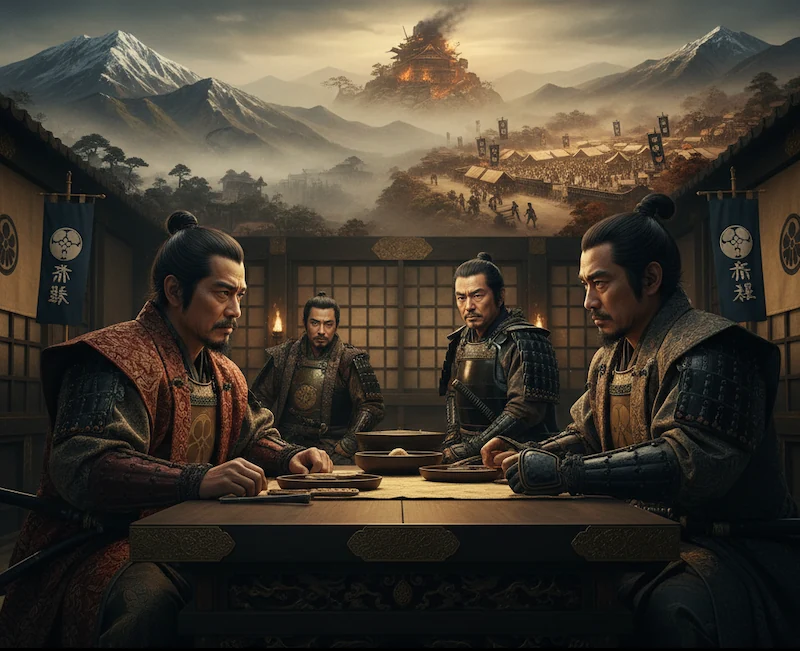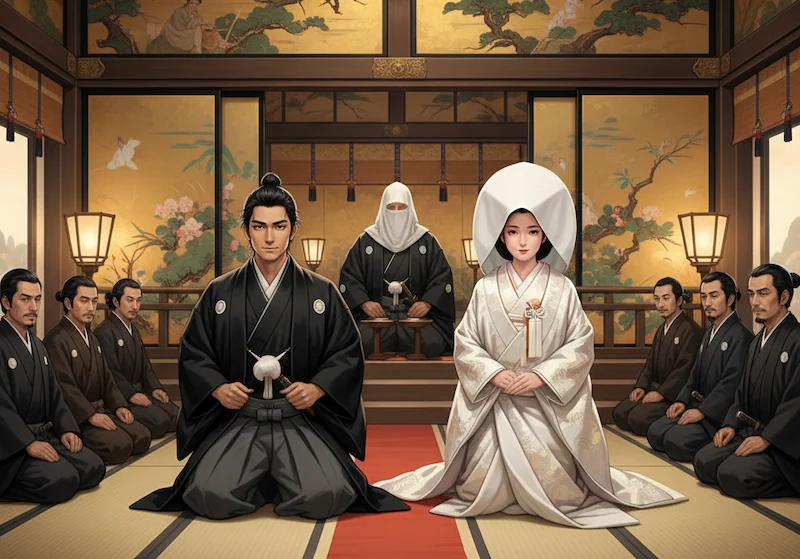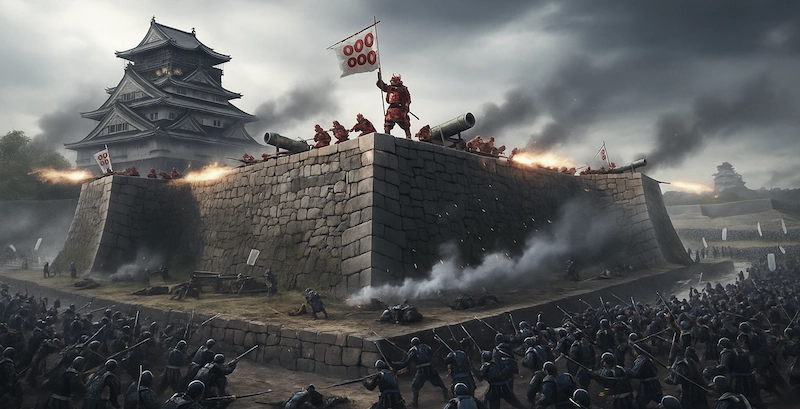
The life of Sanada Nobushige, known to later generations as Sanada Yukimura, embodies the very turbulence of Japan’s late Sengoku period. Through the NHK Taiga drama Sanada Maru, we trace his extraordinary journey—interweaving historical facts with dramatized moments that deepen the story’s emotional and cinematic appeal.
1. The Fall of the Takeda Clan and Diplomacy for the Sanada Family’s Survival

The story opens amid the conflict surrounding Takeda Katsuyori and Oda Nobunaga. The Takeda clan collapses after the betrayal and death of Katsuyori. In the ensuing chaos, the Sanada family faces a perilous choice: whether to align themselves with the Uesugi or the Oda to ensure the clan’s survival.
When the Sanada decide to serve the Oda, they come under the command of Takigawa Kazumasu, who governs the Shinano region. Although rarely spotlighted in other dramas, the political maneuvering between Kazumasu and the Sanada family forms a key narrative moment here.
Unlike most Taiga dramas that focus primarily on the Kansai region—featuring figures like Nobunaga, Hideyoshi, and Ieyasu—Sanada Maru delves deeply into the political and military landscape of eastern Japan, particularly Kantō and Kōshin’etsu. This broader geographic scope offers viewers a fresh and detailed understanding of the era’s shifting alliances.
2. Diplomatic Hostages and the Sanada Clan’s Isolation

Later, Nobushige becomes a hostage to the Uesugi family, where he develops a close relationship with Uesugi Kagekatsu.
When Tokugawa forces attack the Sanada domain during the First Battle of Ueda, the drama depicts Nobushige temporarily returning from Uesugi territory to help repel the Tokugawa army. (Note: this is a dramatic interpretation; historical records suggest that Nobushige did not participate directly—the defense was led chiefly by his father, Masayuki.)
Eventually, Nobushige enters the service of Toyotomi Hideyoshi as a member of the mounted guards (umamawari-shū). At Hideyoshi’s side, he meets key retainers such as Ishida Mitsunari and Ōtani Yoshitsugu—the latter becoming his father-in-law—and finds himself drawn into the power struggles of the Toyotomi court.
Although Sanada Yukimura (Nobushige) is the drama’s central figure, his father Sanada Masayuki steals much of the spotlight as a brilliant tactician, whose cunning and wit shape the clan’s destiny. Equally compelling is Nobuyuki, Nobushige’s elder brother, portrayed as an earnest and honorable man—his presence enriching the drama’s portrayal of the Sanada family’s complex dynamics.
3. The Numata Arbitration and the Turning Point at Sekigahara

The dispute over the Numata domain brings the Hōjō, Sanada, and Tokugawa clans into tense negotiations (the meeting’s exact details may have been dramatized). When the Hōjō family breaks the settlement by seizing Nagurumi Castle, Toyotomi Hideyoshi, now Japan’s de facto ruler, launches the Odawara Campaign—a pivotal move in unifying the nation.
Nobushige later marries Haru (also known as Takurin-in), daughter of Ōtani Yoshitsugu.
Then comes the great Battle of Sekigahara. Predicting a prolonged conflict, Masayuki instigates the Second Battle of Ueda. Some scenes in the drama suggest that Masayuki aimed to seize national power himself—a creative interpretation, as historians generally believe his intent was to support a Western Army victory and preserve the Toyotomi regime. Ultimately, Sekigahara ends swiftly, sealing Tokugawa dominance.
4. Exile in Kudoyama and the Final Stand at Osaka

After Sekigahara, Nobushige and Masayuki are branded as traitors and exiled to Kudoyama at the foot of Mount Kōya. Legend holds that during this exile, Nobushige crafted and sold Sanada himo (woven cords) to sustain his household—a charming yet unverified folk tale not supported by historical sources.
As the Siege of Osaka begins, Toyotomi loyalists invite Nobushige to join their cause. Escaping Kudoyama, he enters Osaka Castle and is said to have taken the name “Yukimura” by adopting one character from his father’s name—a fictionalized title that never appears in historical documents during his lifetime.
In Osaka, he joins forces with famed ronin such as Gotō Matabee, Mōri Katsunaga, and Chōsokabe Morichika, becoming one of the Toyotomi army’s core commanders. Notably, the drama devotes nearly ten full episodes to depicting the Winter and Summer Campaigns. In the Winter Siege, Nobushige’s defensive fortress—the Sanada Maru—repels Tokugawa forces and cements his legendary reputation.
During the Summer Campaign, he leads a daring charge that reaches the Tokugawa main camp itself. However, after his battle flag is seen withdrawn (a dramatic embellishment), morale falters, and his army collapses. In truth, the defeat stemmed largely from being outnumbered and overwhelmed by the Tokugawa coalition.
The story of Sanada Nobushige endures not only for his recorded feats of courage but also for the deeply human depictions of family, loyalty, and the creative flourishes that bring his legend to life. Blending history and artistry, Sanada Maru continues to capture hearts—reminding us of a samurai who lived with unshakable honor amid the chaos of a nation reborn.

comment